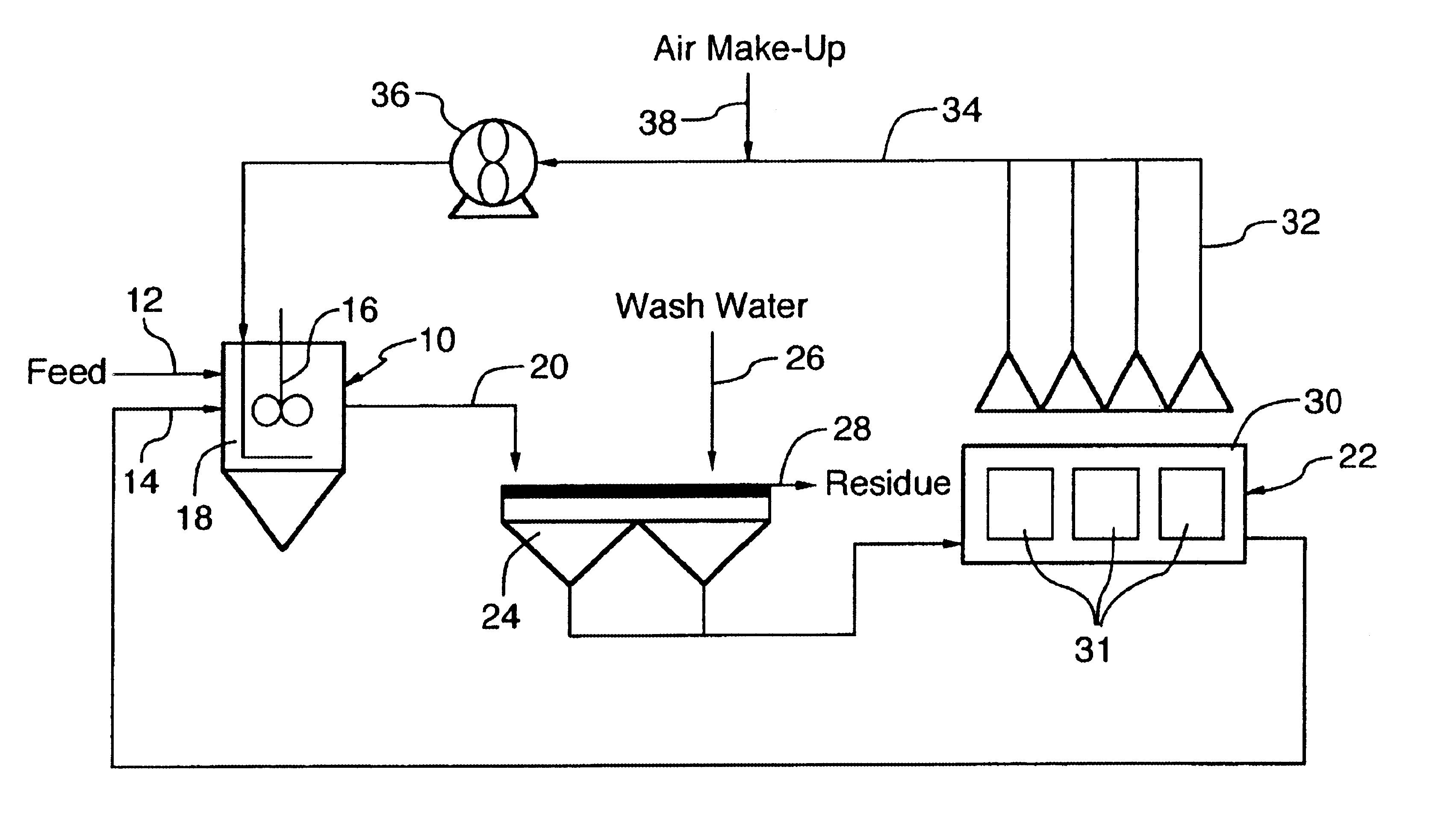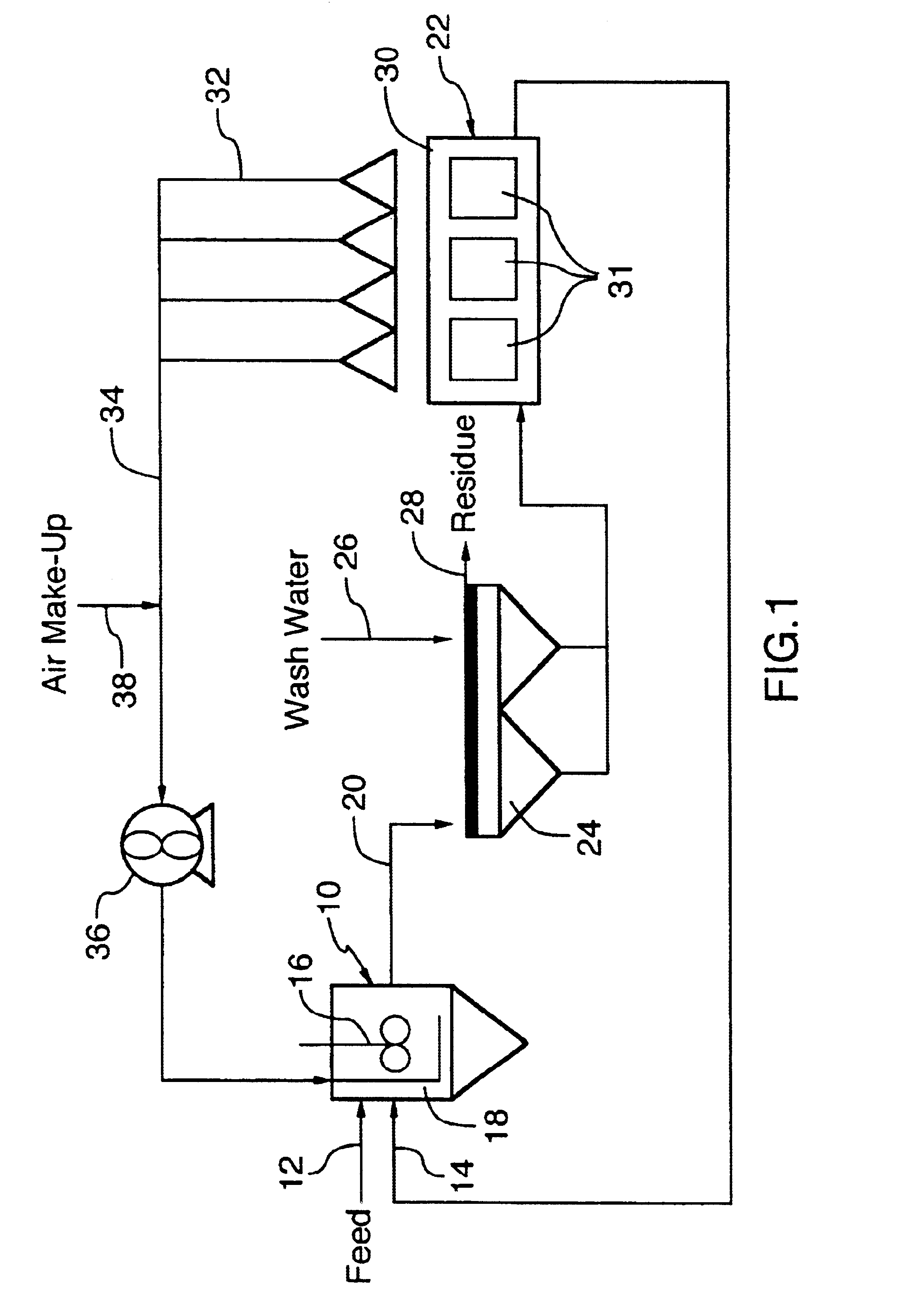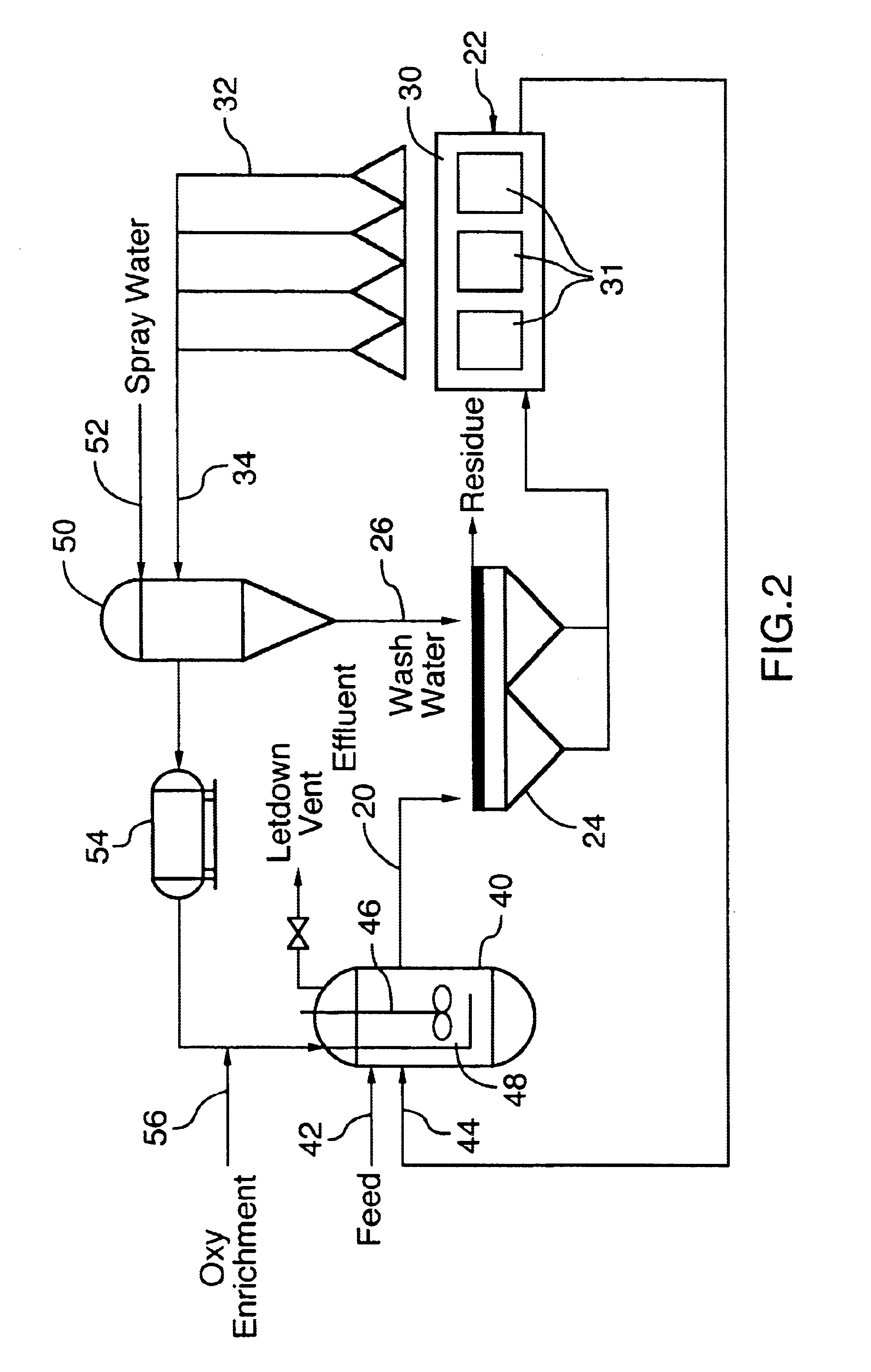Recovery and re-use of anode oxygen from electrolytic cells
- Summary
- Abstract
- Description
- Claims
- Application Information
AI Technical Summary
Benefits of technology
Problems solved by technology
Method used
Image
Examples
examples
To ascertain the feasibility of limiting air dilution of the anode oxygen gases to 5% by volume, a typical example of an individual electrowinning cell is discussed below. Although electrowinning cells vary in shape and design, rough dimensions can be used to estimate the significance of 5% air dilution. In this example, the following type of cell is utilized:Commodity plated: nickelCathode wetted width: 1 meterCathode wetted height: 1 meterCathode current density: 250 Amps / m2 Current efficiency: 90% (bagged anodes)
In this type of cell, each cathode is fed 500 Amps, of which 450 Amps (90%) is utilized to plate nickel, with the rate of nickel plating being approximately 0.49 kg / hour. The rate of anode oxygen generation would be slightly less than 0.13 kg / hour. Assuming a gas temperature of 60° C. and gas pressure of 100 kPa, this would equate to a volumetric oxygen production per anode of approximately 0.11 m3 per hour.
In this type of cell, the rate of oxygen production at each anode...
PUM
| Property | Measurement | Unit |
|---|---|---|
| Percent by mass | aaaaa | aaaaa |
| Percent by volume | aaaaa | aaaaa |
| Temperature | aaaaa | aaaaa |
Abstract
Description
Claims
Application Information
 Login to View More
Login to View More - R&D
- Intellectual Property
- Life Sciences
- Materials
- Tech Scout
- Unparalleled Data Quality
- Higher Quality Content
- 60% Fewer Hallucinations
Browse by: Latest US Patents, China's latest patents, Technical Efficacy Thesaurus, Application Domain, Technology Topic, Popular Technical Reports.
© 2025 PatSnap. All rights reserved.Legal|Privacy policy|Modern Slavery Act Transparency Statement|Sitemap|About US| Contact US: help@patsnap.com



